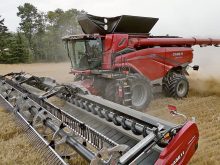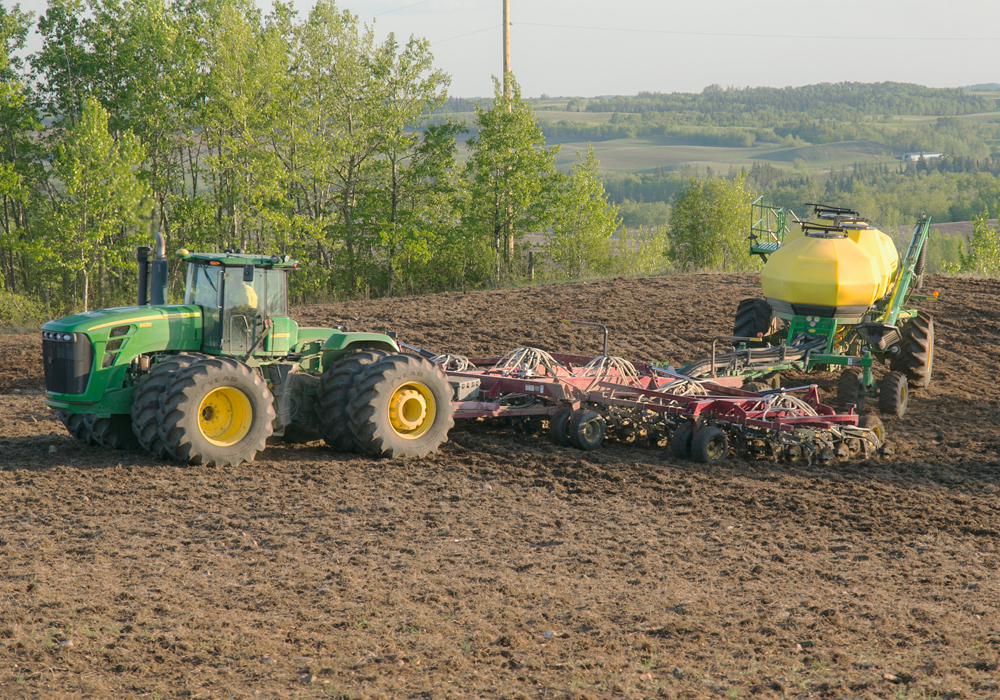Insect levels in Alberta are expected to be about the same this year as last year, with one exception.
“Most insects will be at the similar levels we have gotten used to, or lower, with the big exception being grasshoppers in northwest Alberta and the Peace. Those will have higher numbers,” said Scott Meers, an insect management specialist with Alberta Agriculture.
“We’re poised for some problems in those areas.”
A combination of a large population last fall and a mild fall will likely increase grasshoppers in problem areas, he said.
Read Also

VIDEO: Agritechnica Day 4: Robots and more robots, Nexat loves Canada and the trouble with tariffs
Agritechnica Day 4: Robots and more robots, Nexat loves Canada and the trouble with tariffs.
“Grasshoppers are very much driven by conditions. Hot and dry means the grasshoppers do better and cold and wet weather mean crops do better and grasshoppers don’t do as well. It would be nice to get the balance.”
As well, the cabbage seedpod weevil will continue to be a problem south of the Trans-Canada Highway. Its migration to the Calgary, Strathmore and Wheatland County areas has increased and may cause concerns.
The insect damages crops during its larvae stage. Larvae feed on canola seeds as they develop. Yield losses can be as high as 15 to 20 percent.
“It’s direct yield loss when you have the weevils,” Meers said.
Surveys for bertha armyworms are conducted during the growing season, but the trend is for reduced numbers based on previous years.
“We don’t expect troubles,” said Meers, who works with farmers and agrologists to collect samples in fence line traps.
“It can be really bad if we don’t keep an eye on it, but it’s low everywhere.”
Farmers and agrologists can monitor daily updates of bertha armyworm counts through maps on Alberta Agriculture’s Roping the Web website.
Diamondback moth numbers are tracked annually during the growing season, and Meers said he doesn’t have a good handle on what to expect this year.
Wheat stem sawfly numbers are low in most areas of the province. Farmers with continual problems are advised to switch to solid stem wheat varieties to alleviate the problem.
Meers described last year’s pea leaf weevil season as bizarre. A cold spring delayed the insect’s arrival, which delayed egg laying and limited damage.
Damage is often difficult to spot because the larvae feed on the nodules of the plant. It will sometimes look like the crop is running out of nitrogen or maturing early.
As a result, agrologists monitor damage by watching for adults feeding on plants.
Wheat midge levels appear to be low in Alberta, Meers said.
“That’s a positive thing.”
Unlike grasshoppers, wheat midge does well in wet conditions, but there is a potential for damage in traditional problem areas.
“We’re finding it across the province, but the forecast is very low.”
The cereal leaf beetle may cause concern for producers south of the Trans-Canada Highway. Meers doesn’t expect big problems this year, but numbers are increasing and the biggest risk appears to be in winter wheat in the Lethbridge area.
The number of insects attacking Alberta crops has increased in the last 10 years.
Some seem to be cyclical, but others, such as the cabbage seedpod weevil, seem to have settled into the province and have become perennial pests, Meers said.














